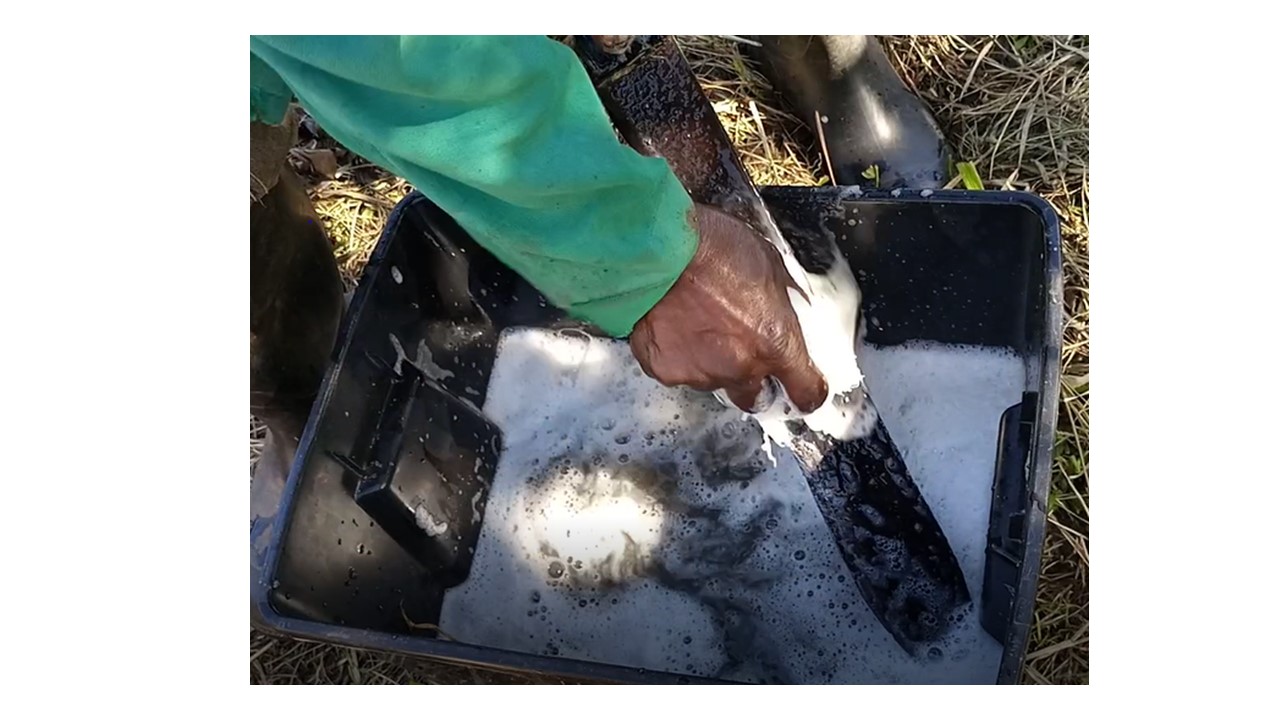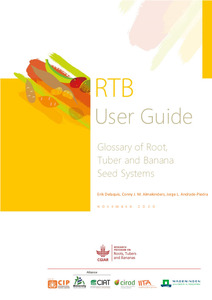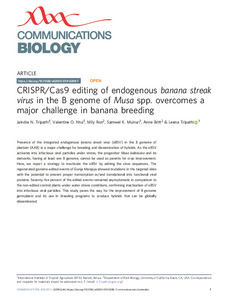As the coronavirus can quickly spread amongst the human population, the bacteria that causes Xanthomonas wilt of bananas (aka BXW) can disperse rapidly through a population of susceptible plants. BXW can have a devastating impact since not only will the infected plants succumb to the disease, but all edible cultivars in East Africa have been found to be susceptible.
As countries safeguard their populations from the spread of the coronavirus by introducing measures to break its cycle of transmission, banana farmers can do the same for their banana plants by applying preventive cultural practices. Moreover, even if worse comes to worst, infested fields can be rehabilitated to grow bananas again in a few months. A recently published paper in Frontiers in Agronomy provides some farmer-friendly options on how to stop the spread of BXW.

A) A plant showing yellow leaf symptoms, B) a farming cutting a diseased plant; C) bacterial ooze on the surface of a cut banana stem and D) discolored pulp of infected banana fingers. Photo credit: A. F. Tazuba/the Alliance
BXW is commonly spread when cutting tools that have come into contact with the bacterial ooze produced by infected plants are used on healthy plants. This transmission can be minimized by disinfecting a cutting tool by cleaning the blade with household bleach or putting it in a fire for 20 to 30 seconds. While this method can be effective, many farmers cannot afford household bleach nor is it readily available in remote rural areas. The fire option is also not practical. Farmers have reported that the flame and the heat can damage the blade. Moreover, farmers are reluctant to start a fire during the dry season and can find it difficult to start a fire during the wet season.
We looked for alternatives to fire and bleach so that farmers can routinely disinfect their cutting tools. We found one effective method that was right at hand, even more so since the beginning of the COVID-19 pandemic: washing with soap.

A farmer washing with soap a machete previously used on a Xanthomonas wilt infected banana plant. Photo credit: A. F. Tazuba/the Alliance
We tested the effectiveness of various sterilization methods by first disinfecting the blade of the cutting tool and then smearing it with a uniform amount of bacterial ooze. We waited 30 minutes for the ooze to set on the blade before applying the sterilization methods. We then recovered the bacteria left on the blades and estimated their number.
We discovered that applying soap to a sponge and scrubbing the blade with it, or using powder detergent, was as effective as household bleach and fire in eliminating bacteria. Soap and detergents act by dissolving the bacterial ooze and sap from the plant, allowing for the bacteria to be easily washed off. Both are cheaper than household bleach and readily available even in the most remote communities. Bars of soap are more commonly found in farming households than detergents since they are cheaper and used for everything including cleaning utensils and clothes.
Immersing tools in boiling water for about a minute was also as effective as household bleach. It could be an option when the banana field is close to the house or other methods are not feasible. We also found that putting the blade in a fire only eliminated the bacteria after a one-minute exposure, suggesting that the previous recommended time frame of 20 to 30 seconds did not completely sterilize the blade.
The other methods tested, like inserting tools into hot and cold wood ash, forcefully and repeatedly inserting the tools into the soil, exposing tools to direct sun, washing tools with cold water only, were only marginally better than the “do nothing treatment.”
The worst option was leaving the tools on a dry surface for seven days. The bacterial population was as high as in the “do nothing treatment,” meaning that if a farmer does nothing at all, contaminated cutting tools can spread the disease for at least seven days.
We hope that the incorporation and promotion of the use of soap or detergents and of boiling water for sterilizing contaminated cutting tools will increase farmers’ flexibility and reduce the cost of the practice, ultimately improving the control of BXW on farms.
For more on how soap and water or boiling water can clean/sterilize farming tools read here.
This blog was written by Walter Ocimati, Bioversity International, Kampala, Uganda in collaboration with Guy Blomme and Anthony F. Tazuba
Suggested reading



